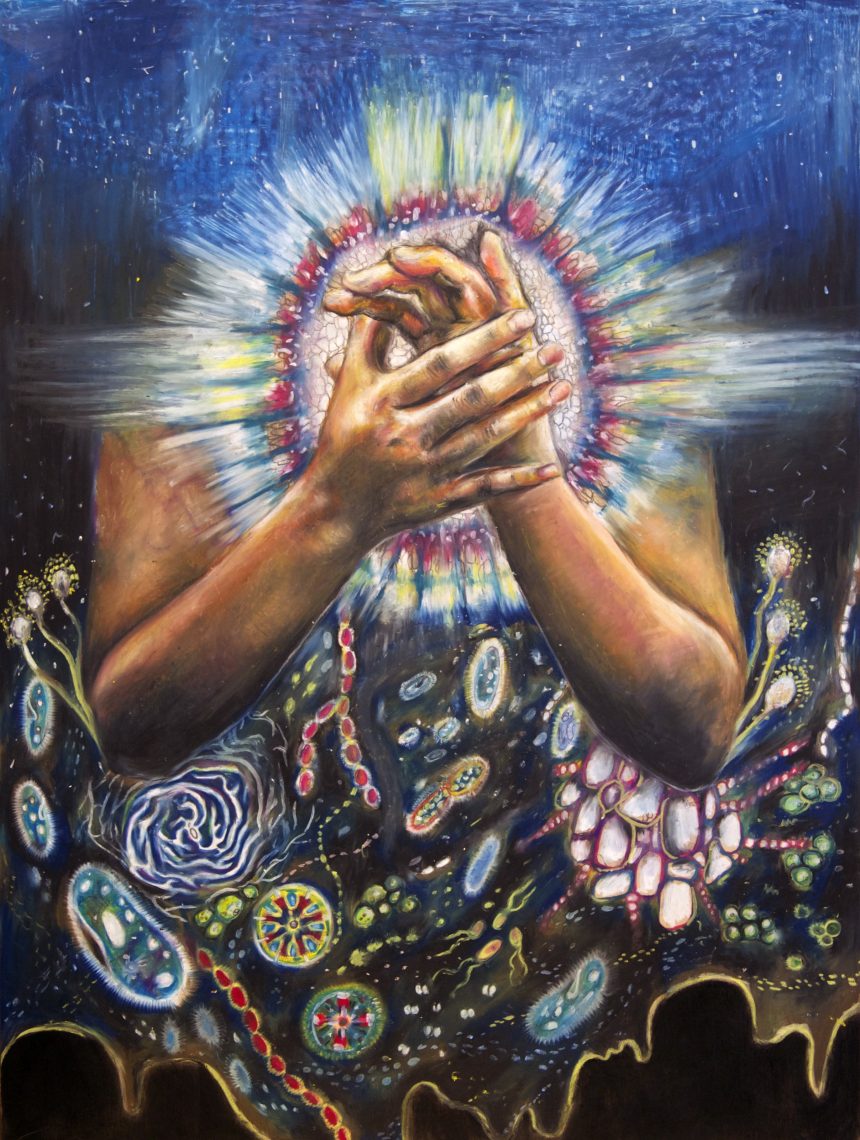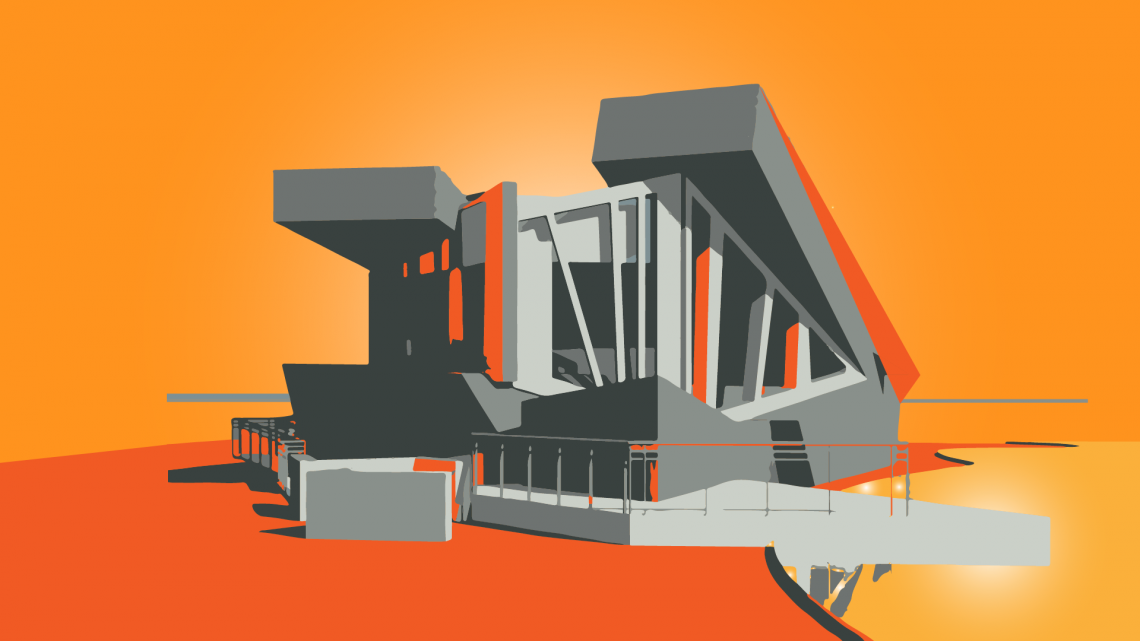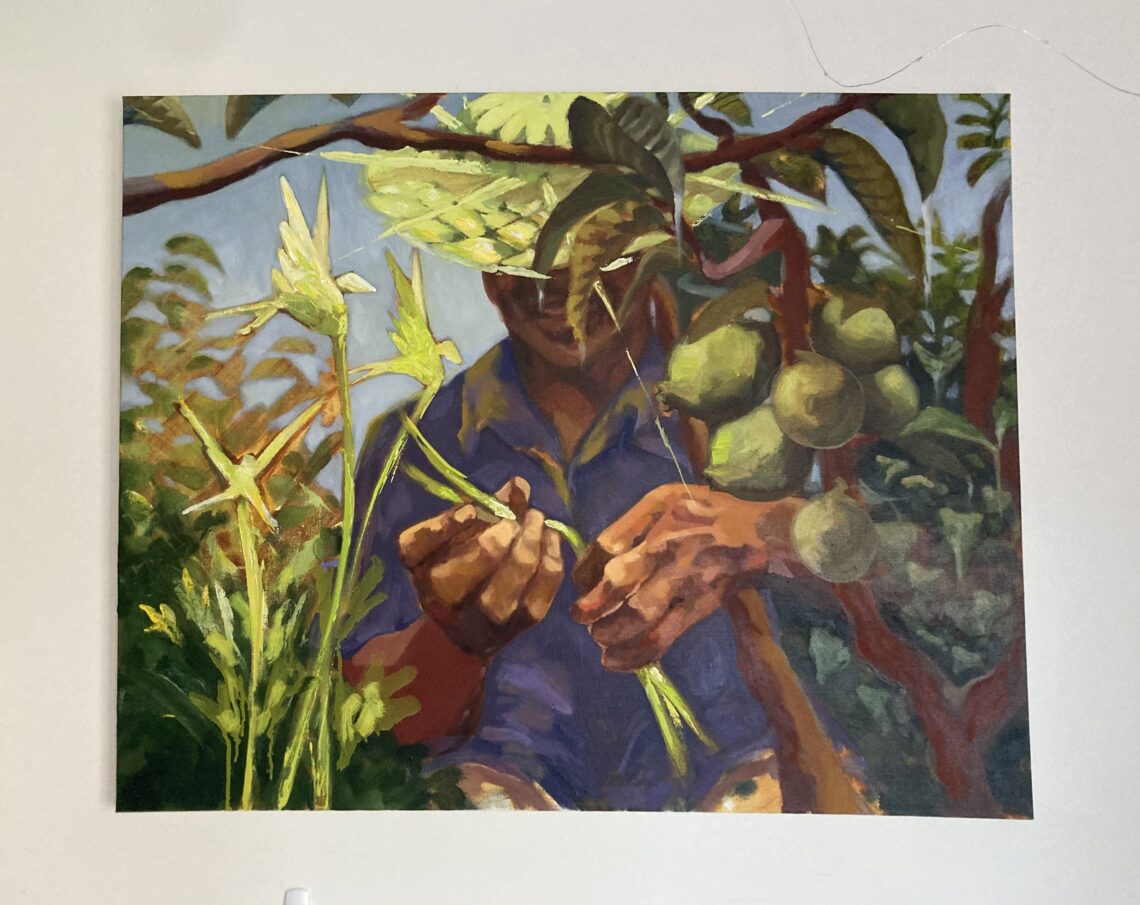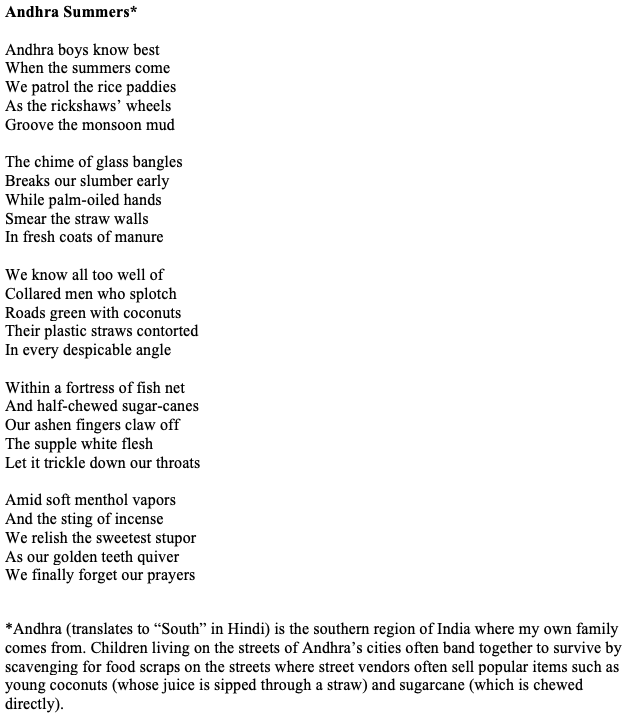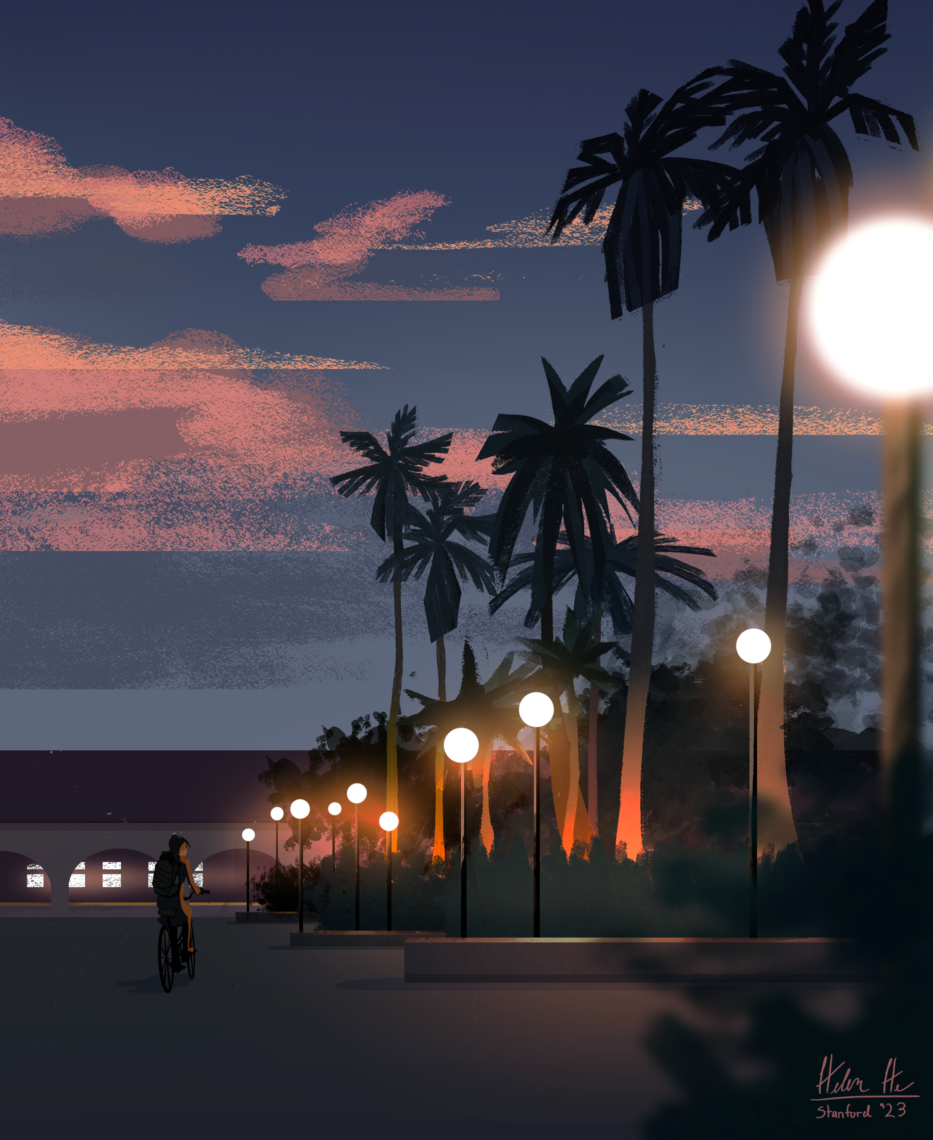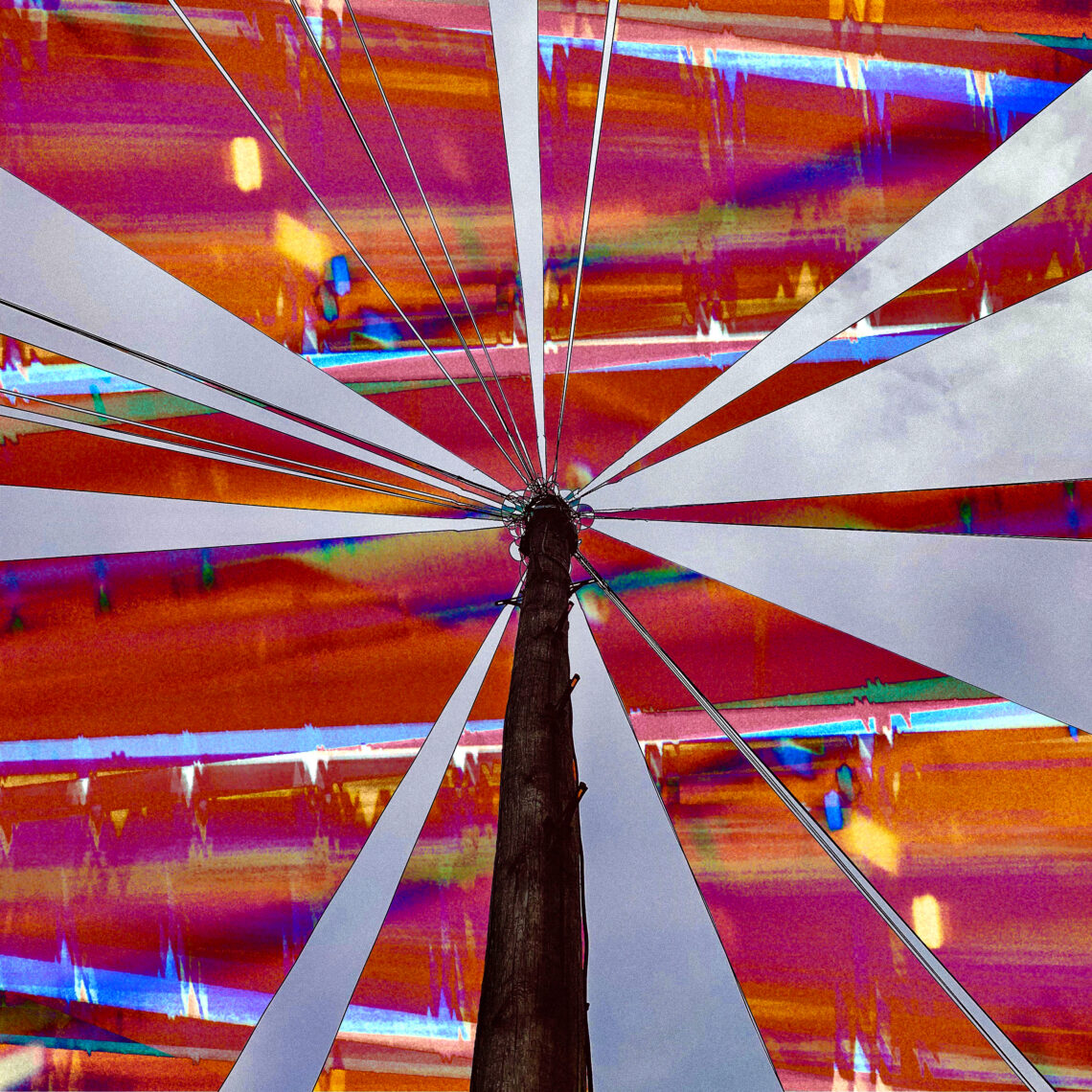
Pan-Asian Music Festival Founder and Artistic Director Jingdong Cai conducts the California Youth Chinese Symphony and the China National Orchestra at Bing Concert Hall on Chinese New Year's Eve.
Photo by Ricky Cheng.A weekend of sold-out performances at Stanford’s Pan-Asian Music Festival
Bing Concert Hall hosts the China National Orchestra.
Ninety musicians filed onstage Saturday night with their erhus, konghous, pipas and zhongruans. At the end of a two-hour orchestral performance, the audience wouldn’t let them leave the stage. Finally, after several standing ovations and four encores, the appreciative musicians headed backstage.
It was an auspicious performance and the first Chinese New Year’s Eve concert to be held in Stanford’s Bing Concert Hall, welcoming in the Year of the Snake.
This year’s sold-out Pan-Asian Music Festival showcased the China National Orchestra, an ensemble of musicians who perform on Chinese instruments. Their three-day residency at the university included solo and symphonic concerts and instrument demonstrations. The festival also featured lectures and panel discussions related to Chinese music and culture.
Friday night’s concert, Masters and Masterpieces, featured virtuoso masters of traditional Chinese and Chinese minority music instruments performing works from as early as A.D. 400 (Three Variations on the Plum Blossoms) to the 21st century (On the Silk Road by Jiang Ying). Before the concert, Stanford’s Ronald Egan, a professor in the Department of East Asian Languages and Cultures, gave a lecture on the relationship between poetry and music in the Chinese tradition.
Bing Concert Hall was busy from 11 a.m. to 11 p.m. on Saturday hosting panel discussions, workshops, an open rehearsal for families and the Chinese New Year’s Eve concert – the centerpiece of the festival.
The CNO open rehearsal for families attracted a full house; afterward, families checked out the instruments on display in the Gunn Atrium and, in more than one case, tried to play them. Bing Nursery School collaborated with festival organizers to present the family-friendly event, which was open to the public, and also invited some of the musicians to the nursery school for a demonstration.
High notes during the New Year’s Eve concert included a generous presentation of Chinese instruments to the Department of Music and the Stanford Chinese Music Ensemble, and a guest appearance by the California Youth Chinese Symphony.
Department of Music Chair Stephen Sano received the instruments in an onstage ceremony and said later, “We were so honored to receive this wonderful donation of such a diverse range of instruments from the China National Orchestra. As we already have a Chinese Music Ensemble and a guzhengensemble, the added resources this gift provides will enhance what we’re able to offer our students in a very real, tangible way.”
Student Sizi Chen, co-president of the 13-member Chinese Music Ensemble, echoed Sano’s gratitude for the instruments and added they might even help with recruitment of new members: “What makes the donation most meaningful is that it inspires us to pursue a higher level of artistic standard and introduces Chinese music to more people in the Stanford community.”
China’s national music
The CNO was founded in 1960 under the supervision of the late Premier Zhou Enlai. It was modeled after a Western-style symphony orchestra and was intended to demonstrate the virtues of Chinese musical instruments and the power of China’s own “national music.” The CNO is directly affiliated with China’s Ministry of Culture and often plays a quasi-diplomatic role; it has performed in more than 50 countries and worked with many renowned musicians the world over.
It is in the forefront of China’s efforts to be recognized as a global cultural power.
PAMF Artistic Director Jindong Cai was inspired to create a Stanford residency for the CNO after observing the recent China residencies of several American orchestras. “American orchestras such as the Philadelphia Orchestra and New York Philharmonic have had a great influence in China through their own residencies there. I hope that curiosity about Chinese music in the West could be just as strong as Chinese interest in classical music – this will be a start to kindling that curiosity.
“The CNO is the best such orchestra in China, full of master musicians of the highest level,” said Cai.
Looking backward and forward
PAMF 2013 was the ninth such festival at Stanford and it has become one of the most important Asian music festivals in the United States. It is dedicated to promoting an understanding and appreciation of music in contemporary Asia through an annual series of concerts and academic activities. Jindong Cai, director of orchestral studies for the Department of Music, is the founder and artistic director.
Cai is already at work on PAMF 2014 when the focus will be music from Tibet and Mongolia. He offered a preview at this year’s festival with the workshop Traditional and Monastic Music in Tibet that featured musicians and scholars from Tibet sharing their experience of collecting and performing fast-disappearing forms of monastic music.
The Department of Music has worked steadily to increase its presence in world music and American vernacular. “From back in 1994 when Stanford Taiko was brought into the department, to the recent appointments of faculty in ethnomusicology, to the institution of the Pan-Asian Music Festival, to the steady presence of guest master artists, it has been a goal of ours to more acutely represent the diversity of our student body with our departmental offerings,” said Sano.






